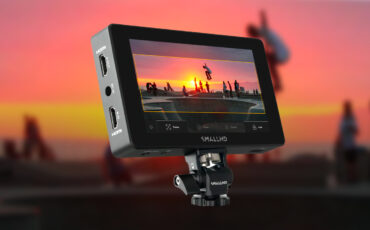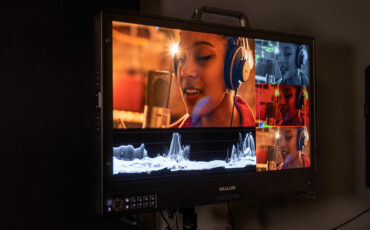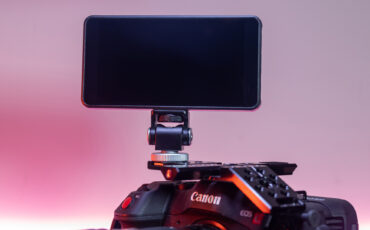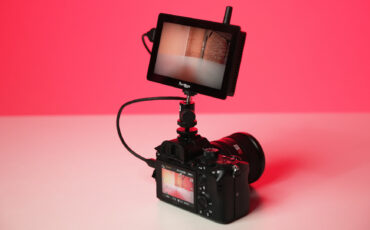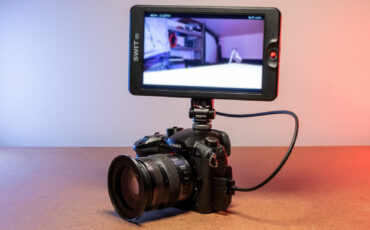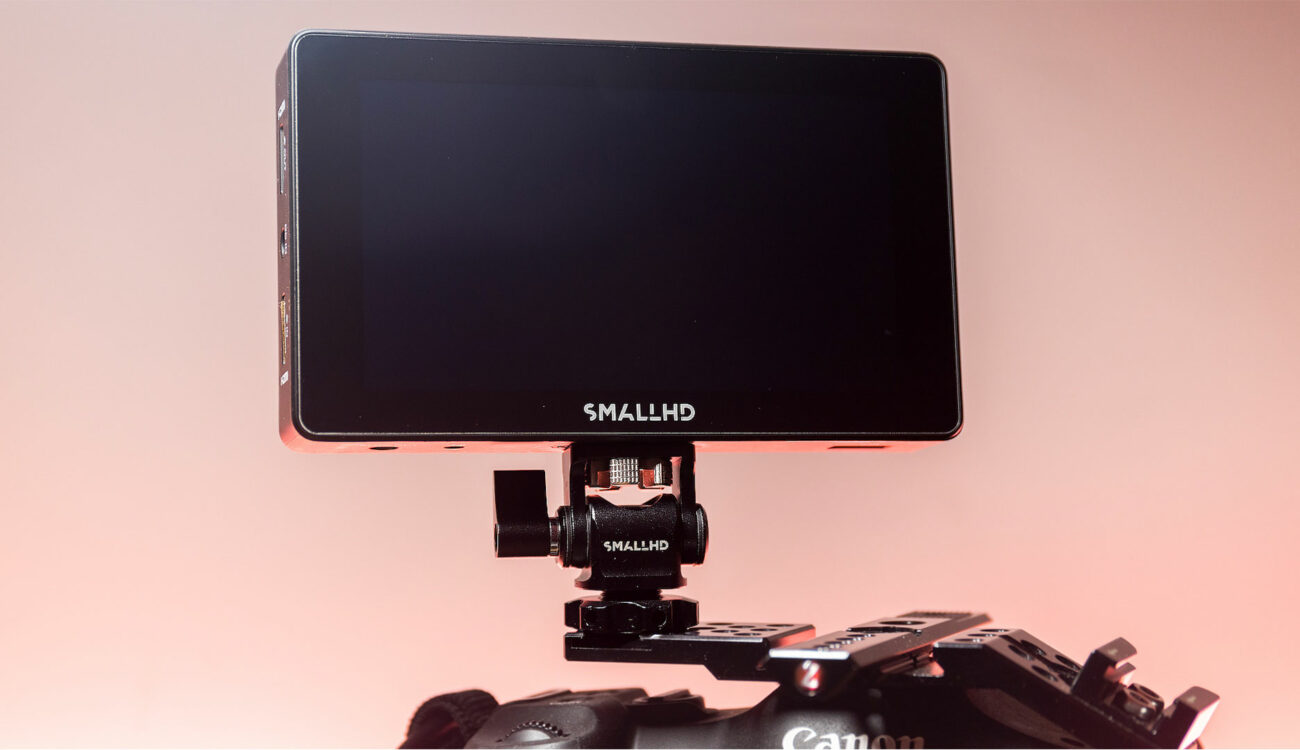
The SmallHD Action is a 5-inch HDMI-only on-camera monitor with a FullHD 1080P resolution, a 1000:1 contrast ratio, and a maximum brightness of 2000 nits. The good news for most filmmakers is its surprisingly affordable price of only $329. But does it hold its promises? Let’s learn more in this in-depth review!
Disclaimer: As usual, let me first say that I am not a SmallHD Ambassador. Like every other article on CineD.com, SmallHD, or any other brand, did not pay us to write this article. However, the company sent us the product to review for free. This review is my unbiased opinion as SmallHD did not modify, influence, or give input about the article before its publication.
When SmallHD introduced the Action 5 in May this year, it immediately caught my attention due to its incredible theoretical price/feature ratio on paper. For these past couple of months, I had the chance to take it with me on many projects to test it thoroughly.
SmallHD’s love-hate relationship with entry-level monitors
SmallHD has been manufacturing on-camera and studio monitors since 2007. Over the years, the company has built a solid reputation for making great products, and their monitors are close to an industry standard worldwide.
Directing Color
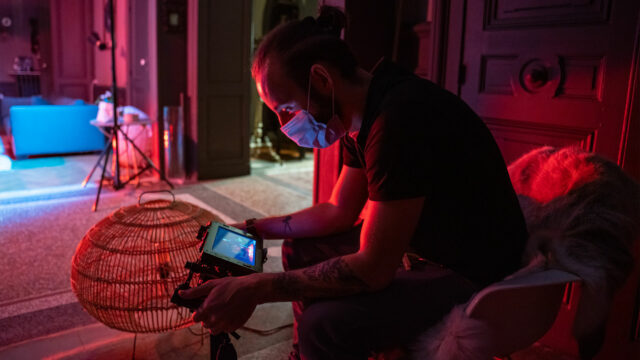
Needless to say that most of their monitoring products are fantastic. To this day, I still use my SmallHD DP7 Pro as my wireless system client monitor, and the good old SmallHD 501 is still sitting on my shelf, reminding me of all the abuse I’ve put it through.
However, “industry-standard” products often have a high price tag, and SmallHD ones are no different. Indeed, the price of most of their monitoring solutions is hard to justify for prosumers, content creators starting their journey, or really anyone in general not making a living out of their passion.
For as long as I can remember, SmallHD always tried to release entry-level on-camera monitors, such as the 7-inch AC7, or the 5-inch SmallHD Focus, back in 2017 that was “only” $499. The Focus – and later Focus Pro – had a great product life until the end of 2021, when it was discontinued. But, it’s hard to say that the Focus OLED or even the Focus Pro remained “entry-level” products with price tags over $800.
In the past couple of years, many companies released affordable on-camera monitors with an excellent price/feature ratio. For example, we can name PortKeys and their PT5 5-inch on-camera monitor under $200 that I reviewed here, or SWIT with their CM-S75F 7-inch SDI/HDMI monitor.
When SmallHD discontinued the Focus lineup it left a big hole in their product line for a couple of months. It gave me the feeling that SmallHD was targeting the “high-end” market only and slightly neglecting a massive part of the monitoring market for prosumers or filmmakers that did not need all the bells and whistles of a high-end monitor.
Let’s face it, most of us don’t need a 100% color-accurate on-camera monitor with a bunch of features you probably won’t use or need. In addition, many individuals only want a bigger/brighter/more comfortable display compared to their camera’s built-in LCD and are not ready to spend close to $1K for such a product.
I was very pleased in May 2022 when SmallHD introduced the Action 5, the most affordable monitor they ever made for $329. They’re showing love to prosumers and content creators just starting out, but I wonder, is it too good to be true?
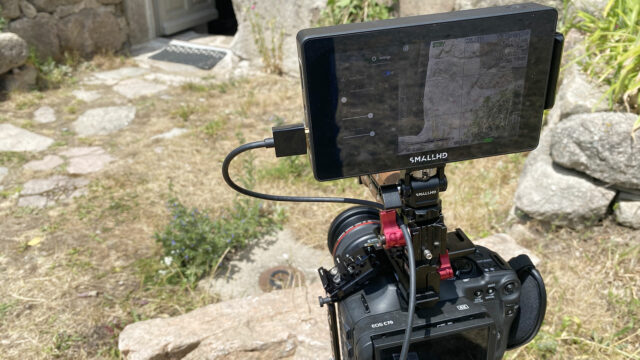
SmallHD Action 5 – Key features
Before we dive any deeper into this review, let’s make a quick tour of the SmallHD Action key features:
- The touchscreen LED-backlit display is 5-inch, with a 1920 x 1080 resolution.
- The screen has a contrast ratio of 1000:1 and a maximum brightness of 2.000 nits, so it is daylight-viewable.
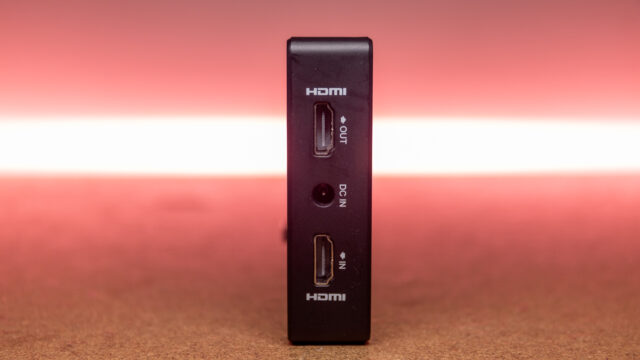
- The Action 5 has HDMI 2.0 input and output ports on the left side. It can take input signals up to DCI 4K at 24fps, UHD at 30fps, and 1080p at 60fps.
- Between the two HDMI ports, you’ll find a 12V DC input.
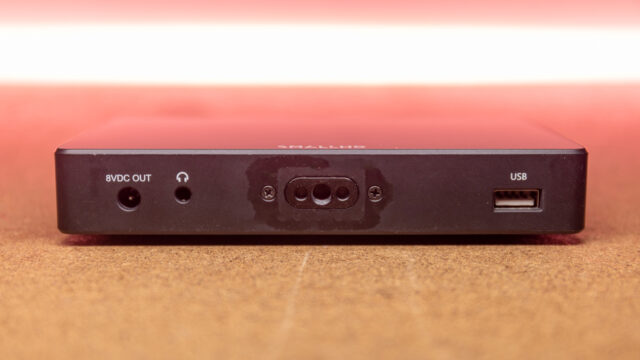
- Also, there is a 1/8″ headphone jack, an 8V DC output, and a USB port at the bottom to update its firmware and load custom LUTs.
- The monitor is mainly made out of plastic. It weighs 8.5oz/241grams without a battery and measures 15.1 x 8.9 x 2.5cm.
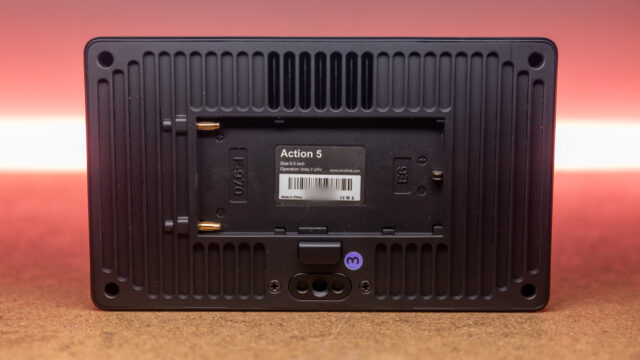
- At the back, a built-in battery plate can take Canon LP-E6 or Sony NP-F batteries.
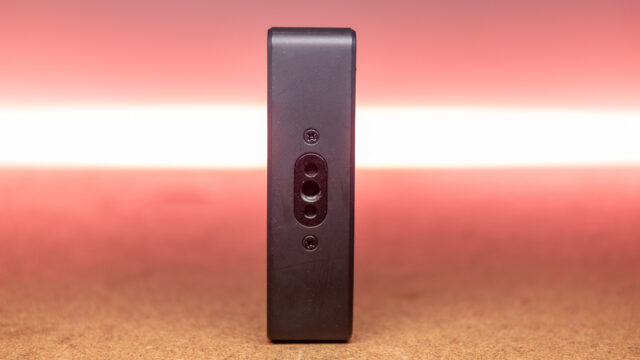
- There are three 1/4 “-20 mounting points with locating pins at the bottom, top, and right side of the Action 5.
- The Action 5 is powered by SmallHD’s own Action OS, which is very different from PageOS used on all their other monitors.
Now that you have a better view of all the Action 5 features on paper, let’s move on with my real-life thoughts.
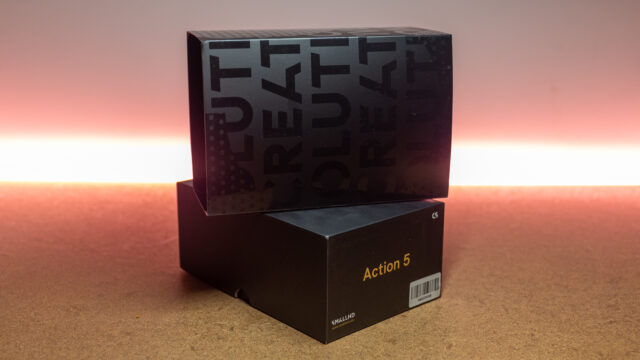
Unboxing and included accessories
The SmallHD Action 5 comes in a nice little box. Open it, and you’ll find:
- The monitor.
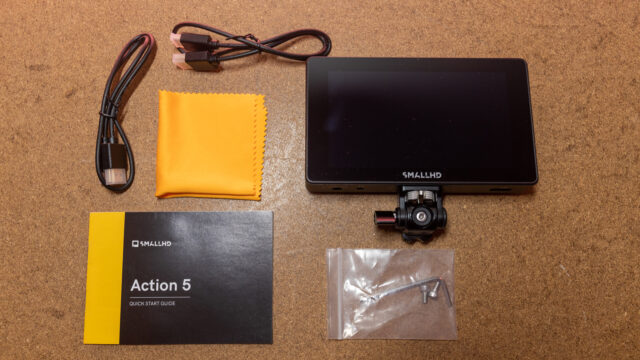
- One 18in/45cm mini-HDMI to full-size HDMI cable
- One 18in/45cm micro-HDMI to full-size HDMI cable
- A monitor mount with a hex key and two M3 screws.
- A printed quick start guide and microfiber cloth.
- Not pictured: a screen protector and a USB stick.
That’s a lot of things for an entry-level monitor! However, I would have preferred a regular full-size HDMI to a full-size HDMI cable compared to the mini/micro one, but it’s okay.
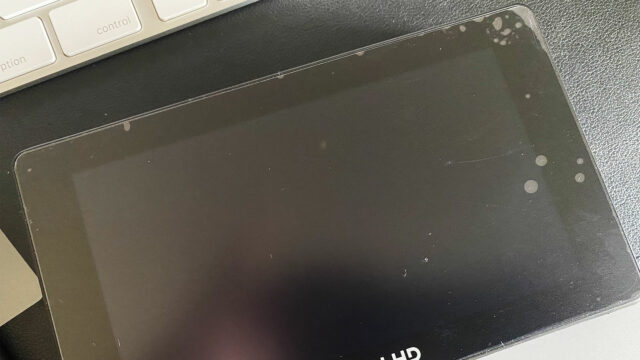
On the screen protector side, I could not put it in place without creating air bubbles, so let’s say I’m bad at installing screen protectors.
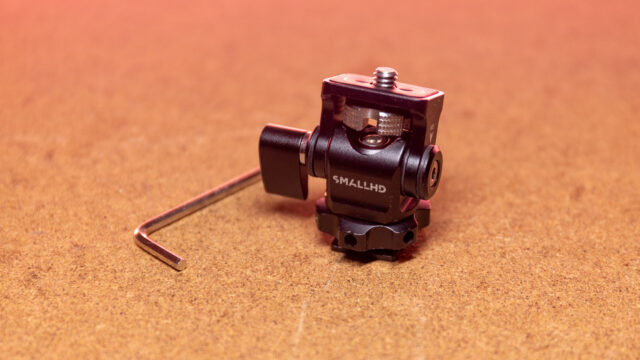
The monitor mount is well made, and it gets the job done. With the included hex key, you can firmly tighten the Action 5 to the support, so it doesn’t wiggle.
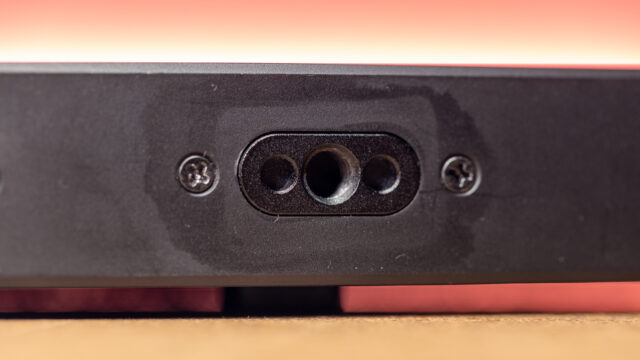
I’m picky, but the Action 5 has locating pins next to its three 1/4 “-20 mounting points. I said it before, and I’ll repeat it if I have to, but these 1/4 “-20 mounting points with locating pins are not an “industry standard.” Unlike the 3/8-16″ mounting points with ARRI locating pins, which are more versatile and a well-established standard. To me, Atomos did it right with their Ninja V/V+ mounting points, and many camera monitor manufacturers should follow the trend.
One of my all-time favorite monitor mounts is the optional one for the SmallHD 501. This 3D-printed mount was hard-mounted to the monitor with two screws: no wiggle, no unscrew, and it felt like it was part of your camera setup. If SmallHD could launch some accessories with 1/4 “-20 with locating pins, or even better, dedicated monitor mounts for its products, that would be great!
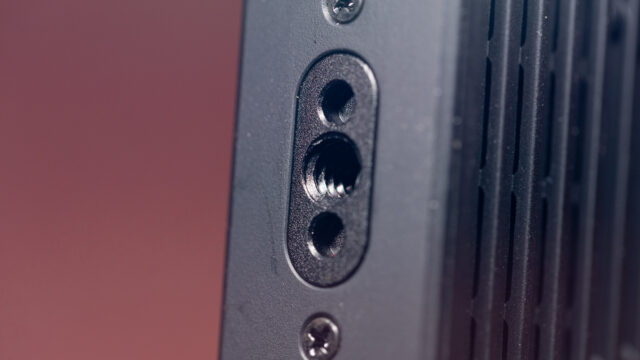
Build quality and powering options
The Action 5 is entirely made of plastic, except for the mounting point inserts, which are metal. However, it’s a pretty good quality plastic and does not feel cheap in hand. Just be cautious not to drop the monitor, as it would probably not survive the fall.
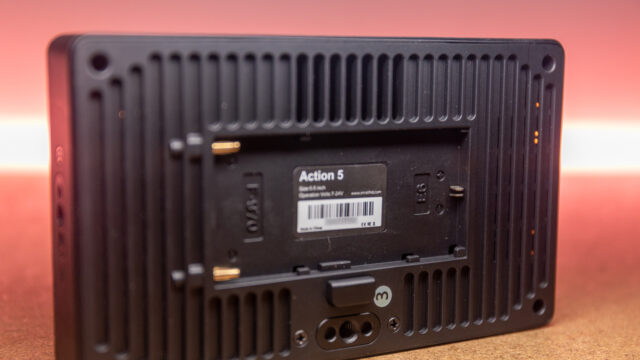
At the back’s top, you’ll find the exhaust vent. Indeed, the monitor has a fan inside. You can set it to Low / Mid / High in the menu, but you can’t turn the fan off. Fortunately, the fan is not noisy, and I let it do its thing in Low mode during all my shoots with no issues.
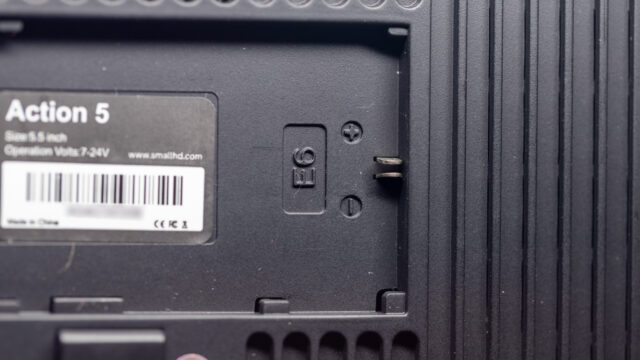
The back of the monitor features a built-in dual battery plate that can take Sony NP-F and Canon LP-E6 batteries.
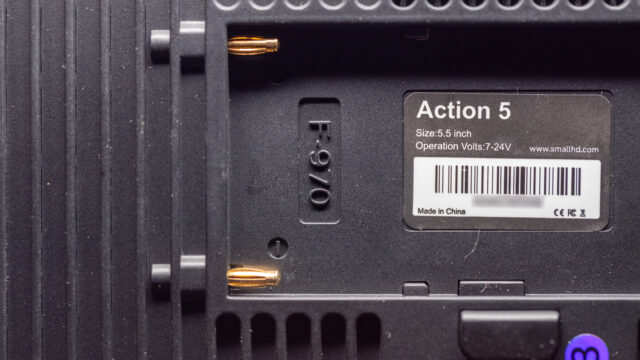
There is a lock/release button, but it only works with Sony NP-F batteries.
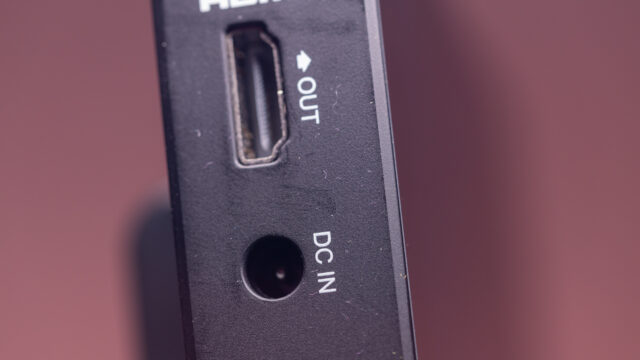
Furthermore, you can power the Action 5 externally via the DC input. This power input is located between the two HDMI ports on the left side.
In terms of battery life, one thing you need to be aware of is that this monitor eats batteries like no tomorrow. To give you an idea, at 30% backlight – enough for a daylight interior shoot – a Canon LP-E6N battery will last you around one hour and a half. I did not do a scientific test, but a Sony NP-F550 battery gives you approximately the same runtime, as the capacity is nearly identical to the Canon one.
Unfortunately, things worsen once you start increasing the Action 5’s backlight settings to 70-80% in daylight exterior conditions. Indeed, you’ll get around one hour of battery life.
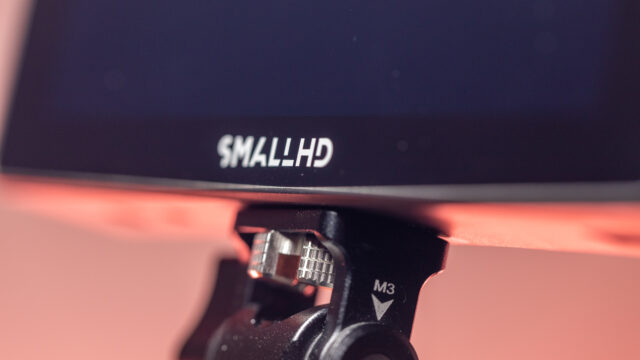
SmallHD Action 5 display
The SmallHD Action 5 features a 5″ LED display with a FullHD 1080p / 1920 x 1080 resolution. The display is a touchscreen and the only way to navigate inside the menus.
The Action 5 has a claimed maximum brightness of 2000nit, which is perfectly daylight-viewable. The monitor has a contrast ratio of 1000:1 and a “Rec. 709” color gamut, but I don’t know if the panel is 8-bit or 10-bit (8+2 FRC). The panel is pleasing to the eye with a pixel density of 400ppi.
The Action 5, like every on-camera monitor with a touchscreen, will get full of fingerprints in no time. Get a microfiber cloth at your disposal as you’ll often need to clean it. The screen is quite glossy, but not the worst I’ve seen.
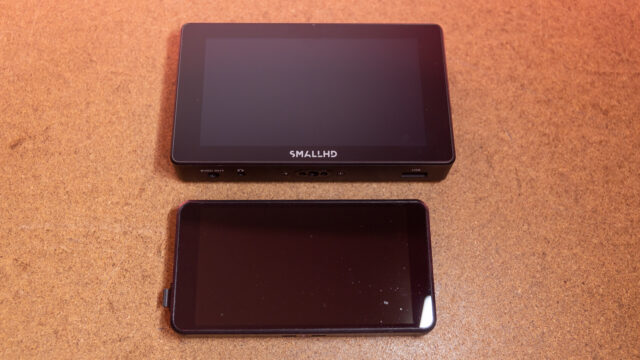
Also, compared to other 5-inch monitors like the PortKeys PT5 I reviewed here, the Action 5 is more prominent. The final screen real-estate is the same between both monitors, but the SmallHD Action 5 has more extensive black borders. It did not bother me, but it’s worth mentioning.
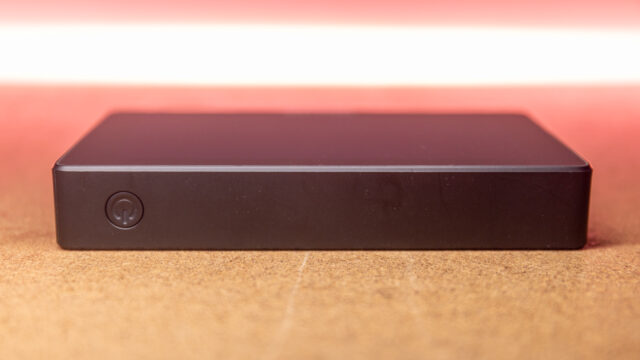
It’s time to press the power button on the top right corner of the monitor for 5 seconds and let it boot for around 2 seconds.
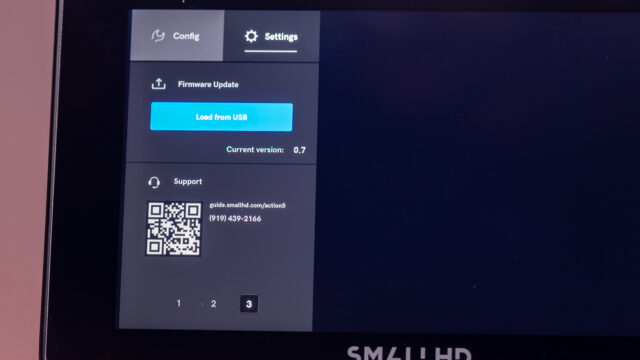
ActionOS
As I already mentioned, the Action 5 is powered by a new operating system called ActionOS. This OS is very different from PageOS used on all the company’s other monitors.
To this day, I still think that PageOS is one of the best monitor operating systems on the market. It’s easy to use, responsive, and with all the tools you need in a non-obstructive user interface.
So is ActionOS as good as its bigger brother? Let’s admit it: with the Action 5, SmallHD has proven that they know how to design efficient camera monitoring operating systems.
According to the company, “the ActionOS toolset is designed to be mastered in under 60 seconds.” Personally, I would add “without even reading the user manual.”
We could say that ActionOS is a stripped-down version of PageOS, but it’s been designed from the ground up. Please remember that the Action 5 is an entry-level product, so ActionOS has fewer monitoring tools and features compared to more high-end/professional models. Indeed, ActionOS only features four monitoring tools:
- Focus assist
- Expose tool/false color
- Look Tool/3D LUT support
- Frame tool
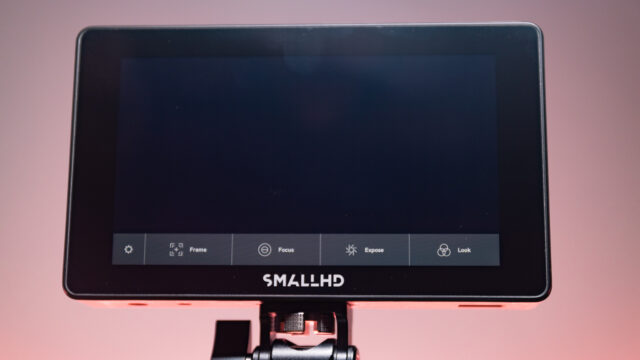
When you turn the monitor on and touch the screen, there are four buttons at the bottom to activate or deactivate each monitoring tool quickly.
On the left, you can see the menu button. The menu is divided into two parts: configuration and settings.
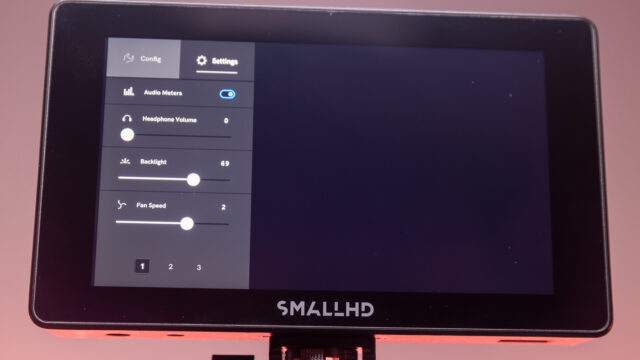
In the configuration tab, you have three pages to adjust the backlight settings, fan speed, image flip, firmware update, etc.
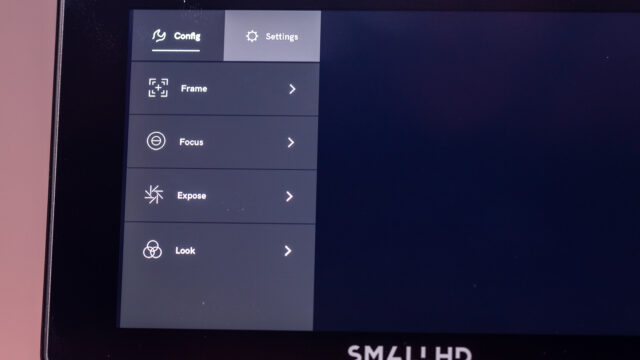
The settings tab allows you to adjust the parameters of each monitoring tool.
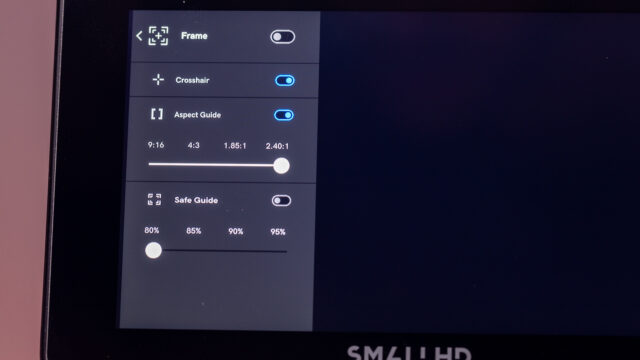
You can activate the crosshair and set your framing/safe guides in the frame settings. Please note that there is no anamorphic de-squeeze option.
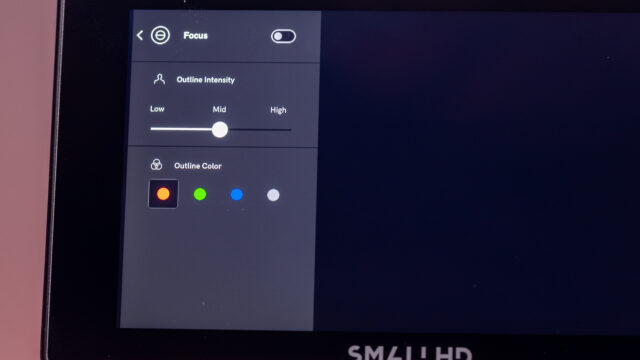
The focus settings are straightforward; you can adjust the gain and color of the peaking. Also, if you pinch the screen, you can zoom in and out 2/4 times to check that your image is perfectly in focus.
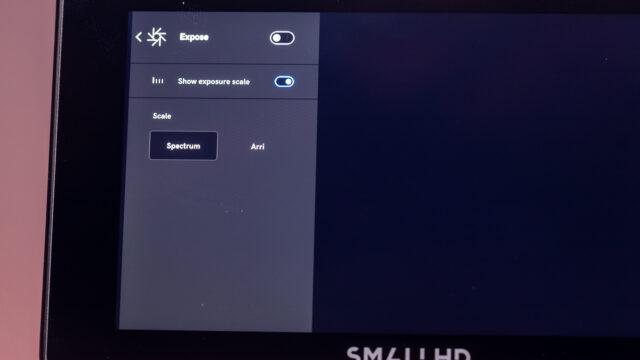
The expose settings let you choose between a Spectrum and ARRI false color and activate the exposure scale.
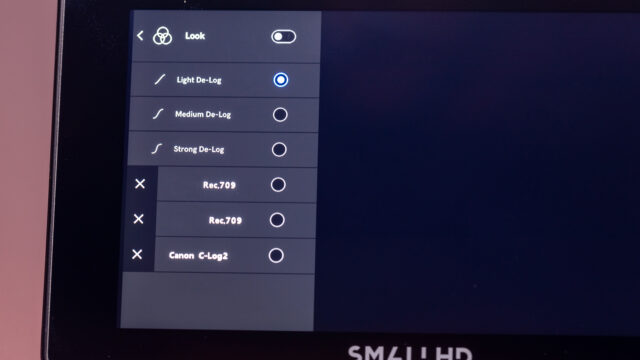
Last but not least, the look settings. The SmallHD Action 5 comes with three built-in De-Log LUTs. Unfortunately, you can’t remove nor replace them.
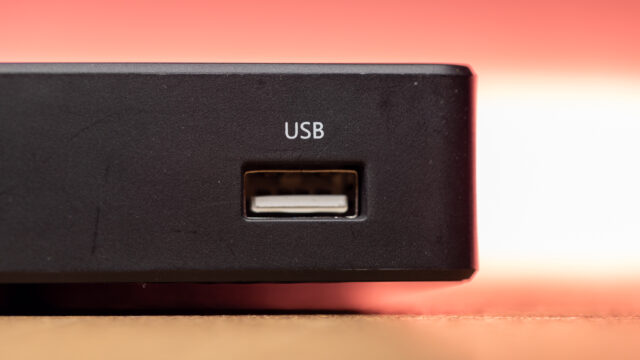
However, you can load and store up to three LUTs of your choice via the USB port at the bottom of the monitor. In addition, the Action 5 comes with a USB stick that stores multiple LUTs by SmallHD.
Having only four monitoring tools could be a limitation, especially as a filmmaker using SmallHD’s “professional” lineup of products. Do I miss tools like waveform, scopes, or zebra? Of course, but the Action 5 felt like a learning curve toward cinematography minimalism. The monitor only does four things, but it does them well. The UI does not get in the way, and I must admit I enjoyed using it quite a lot.
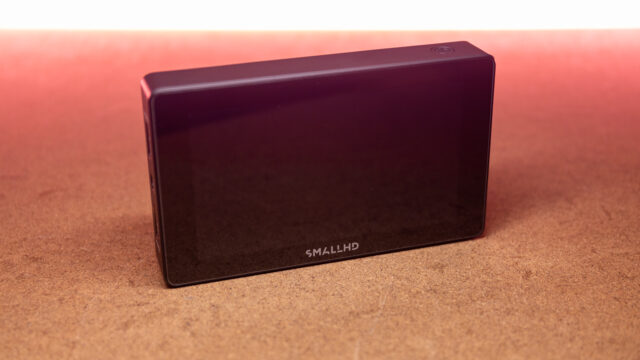
Screen image quality
Not all monitors are created equal, and the quality of the display behind them may vary significantly. A great on-camera monitor must be as color accurate and close to “what you see is what you get” as possible. If your monitor colors are incorrect, you won’t see your footage as it is. For example, when a monitor’s colors are wildly inaccurate, you may see orange when you’re supposed to see yellow or red. This can affect how you set your camera’s white balance or exposure.
Most of the time, you can’t use a probe or spectrophotometer to adjust your on-camera monitor. It means that you’ll have difficulty trying to calibrate it correctly by hand with only a few built-in picture adjustment tools at your disposal in the menu system. In short, on-camera monitors must be as good as possible out of the box with minimal color adjustments needed by the end-user.
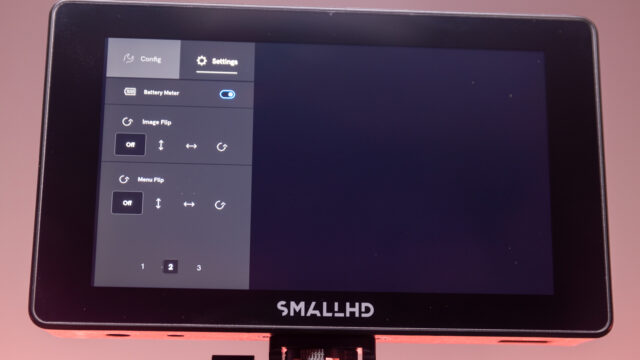
Furthermore, something very special to this monitor is that you have no way to adjust/calibrate the SmallHD Action 5 display in the menu. I found the colors out of the box to be okay but slightly off towards the green side. Also, you cannot adjust the display’s green/magenta tint or white balance, which is a bit odd.
The backlight level is the only “image-related” setting you can adjust. On most non-OLED on-camera monitors, the display tends to lift the image’s black parts if you crank up the brightness to its maximum setting. In short, blacks are not black anymore, but more on the grey side, and the picture becomes a bit washed out.
The monitor’s contrast is good at 30% brightness, which is enough for daylight-interior shoots, and blacks are relatively deep. When shooting outside, if you set the Action 5’s backlight level to 100%, you start losing contrast. However, the image does not get mushy, and you can see that the monitor is pushing the brightness of your entire image and not only the black/shadow parts.
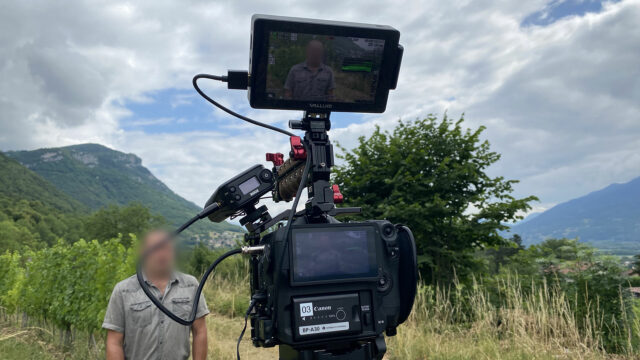
SmallHD Action 5 field test
As I already mentioned, I had a good time using the Action 5 on set. This compact on-camera monitor makes sense with a small Canon LP-E6 or Sony NP-F550 battery that does not add much weight to your camera package.
With its high brightness of 2000nit, this on-camera monitor is an excellent all-arounder. You can use it in nearly all shooting conditions, inside or outside.
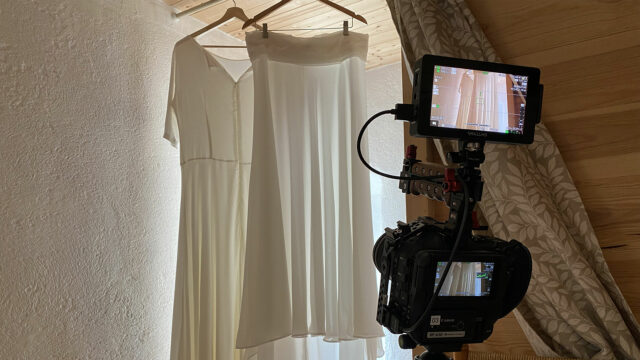
If you’re new to such bright on-camera monitors, you can easily be tricked by how brilliant your footage looks on the Action 5, while you’re in fact underexposed. In such a case, the built-in False Color tool is your lifesaver to expose your image correctly.
I say the same with every touchscreen monitor, but the Action 5 is no different, and the screen catches fingerprints quickly. As a result, you’ll need to clean your monitor very often, which can be annoying.
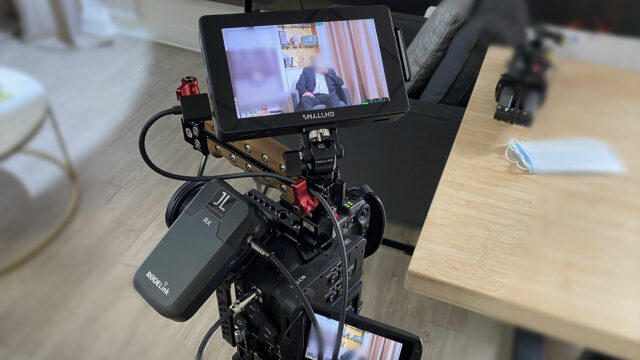
At first, I was a bit afraid that the screen would be too glossy for daylight exterior use. However, I can confirm that is not the case as it remains perfectly viewable even when direct sunlight hits it.
During all my shoots, I was not annoyed by the monitor’s built-in fan. I kept it to its lowest setting, but after a couple of hours, the monitor was slightly hot to the touch. I don’t know if and how this will affect the Action 5 long-term longevity.
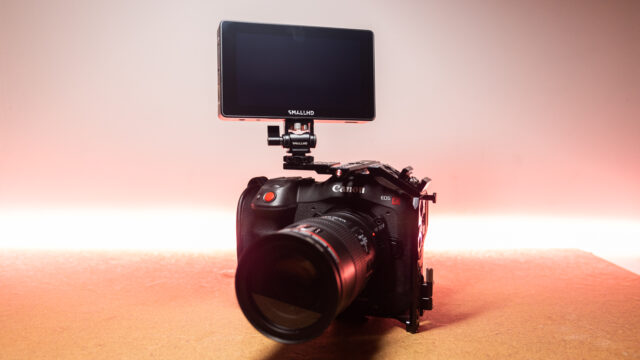
Final thoughts
The SmallHD Action 5 is now the company’s most affordable on-camera monitor. According to SmallHD, this monitor is for those who have not entered the monitor game yet. It’s for the “beginner, never owned a SmallHD monitor, maybe only been using the camera LCD”-type users.
I’d say that I was pleasantly surprised by the image of the Action 5. The monitor comes with simple promises that it’s able to keep. So can we complain about the missing monitoring features? Yes, but it’s not the purpose of the Action 5, and SmallHD has plenty of other monitors in its lineup if you need these features. In the end, you can’t blame a product for not offering features it says it’ll (probably) never have.
Who is this monitor for? Suppose you don’t have an on-camera monitor yet and want to start filling up your filmmaking kit without breaking the bank. In that case, I think the Action 5 is a fantastic addition to your camera package. For owner-operators, you won’t regret spending the money on a versatile daylight-viewable monitor from a reputable company.
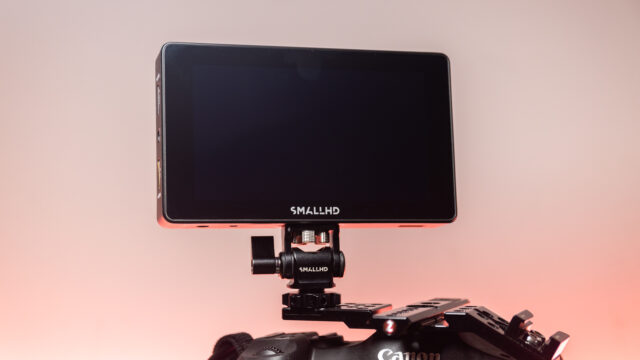
Price and availability
The SmallHD Action 5 retails for $329.00 and is available now. Unfortunately, at the moment, it is only available in the US.
I had a hard time finding competitors to the Action 5 simply because there are not a ton of 5-inch “affordable” daylight-viewable monitors on the market. We could list the Atomos Shinobi that retails for $299, but it has a maximum brightness of “only” 1000nit. The only competitor I could find in this price range is the PortKeys LH5P I reviewed. However, it’s slightly more expensive at $399.
For more information, please visit SmallHD’s website here.
What do you think about the Action 5? Do you like the minimalistic on-camera monitoring approach? Do you think you’ll miss some monitoring features? Do you prefer using 5-inch or 7-inch on-camera monitors? Don’t hesitate to let us know in the comments down below!



